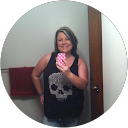We think it’s critical to remember what this statistic represents: each alcohol-related death happened to a special person with hopes, dreams, and goals –someone with loved ones whose lives will forever be affected by such a tragedy. So as wrongful death attorneys, we always want to learn as much as possible about the individuals involved. That way we can obtain the best possible outcome for all.
A family is forever changed
In a storybook-like setting, a young family enjoying the Labor Day weekend was taking a drive on a country road. Without warning a drunken driver going the other way swerved in front of their SUV—and permanently changed their lives.
The SUV went airborne, did a slow roll in the air, landed on a guardrail (crushing the roof), rolled down into a ravine, and caught fire. Passersby managed to free Steve*, the husband, and Jordan, the family’s 10-month-old son, but Julie, Steve’s wife, was killed instantly.
When we took this case, it soon became clear that we would go to trial rather than settle out of court. The impact this young mother’s death had on her family just wasn’t something that could have easily been quantified in terms of a monetary settlement. So we tried the case in court, and we approached it in a way that conveyed who Julie had been: a young, vibrant wife and mother with a promising life ahead of her.
For a free legal consultation, call 614-481-6000
Julie’s story
We don’t put words in our clients’ mouths, so whenever possible we let them speak for themselves on the stand. But for obvious reasons, sometimes they can’t. We asked Steve to tell Julie’s story to the jury, and doing so brought home just how much he and Jordan had lost.
He spoke of his sleepless nights since the accident, lying in bed, missing the sound of his wife breathing next to him. He described how he’d refused to clear out her closet for years after her death, simply because he didn’t want to forget the scent of her perfume on her clothes, one of the last remaining links he had to her.
And he told the story of driving through the countryside with Jordan a few years after the accident. They’d passed by a barn in a cornfield, and leaning against the barn was a long ladder. From the back seat, Jordan called out to stop. When Steve asked him why, his son told him they should pull over and climb up the ladder, so they could visit his mom in heaven.
Stories like that resonate with people. They help a jury understand what human life means, and what’s justified and deserved when a life has been lost.
Bringing a victim to life
Whenever we present a case to a jury, we let them make their own decisions. We know they’re smart people and we trust that they’ll get the verdict right.
In Julie’s wrongful death case, we were able to connect jurors to Julie in a fundamental, human way. This became clear to us after the trial, when we visited the jury room where they had deliberated. We had given the jury blown-up pictures so they could see Julie throughout her life—as a teenager, as a college graduate, as a mom. In that room, the jury had lined up and organized the pictures chronologically, from birth to death, to create a timeline. It allowed them to feel Julie’s presence there in the deliberating room.
It was also clear that we had connected with the jury on a deep level when we learned how much they had awarded Julie’s family. At the time, it was the largest amount awarded in the county for an auto accident.
Click to contact our personal injury lawyers today
A wrongful death award—and a commitment
The large award showed that the jury understood the gravity of loss of life. But in this particular case it was especially significant because it allowed Julie’s family to honor a wish of hers that she’d expressed when she was still alive. Before Jordan was born, she and Steve had made a pact that, for as long as possible, one of them would be a stay-at-home parent. Steve had been the breadwinner then, but after Julie died there was no way he could have continued working, so he stayed at home to raise Jordan.
Our goal was to create an economic situation where Steve could live up to his pact with his wife. It would be an arrangement where, in addition to getting the long-term care he required for the head injuries he’d sustained in the accident, he would be able to stay at home and be directly involved in parenting Jordan, a boy who had lost his mother at such a young age.
Complete a Free Case Evaluation form now
Our approach: different objectives, one underlying constant
It takes extra effort to know someone we’ve never met. We get to know the victims of such tragedies, whose voices can never again be heard, by getting to know their family members, friends, and co-workers. and getting to know Julie through Steve and Julie’s family and friends was a real privilege.
It’s true that every case is unique, and each needs to be handled in a way that will ensure the best possible outcome for our client. But underlying that customized approach, one thing remains the same: we get to know each of our clients, as well as their lost loved ones, on a very personal level. Doing so lets us give our clients exactly what is needed to deal with their tragedy.
*Names in this article have been changed to protect our client’s privacy.
The outcome of any client’s case will depend on the particular legal and factual circumstances of the case.
Call or text 614-481-6000 or complete a Free Case Evaluation form









































